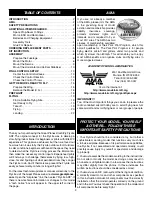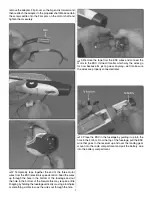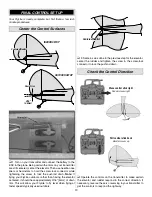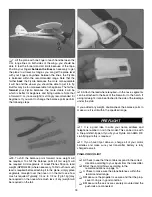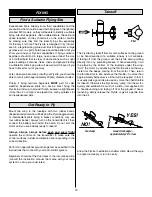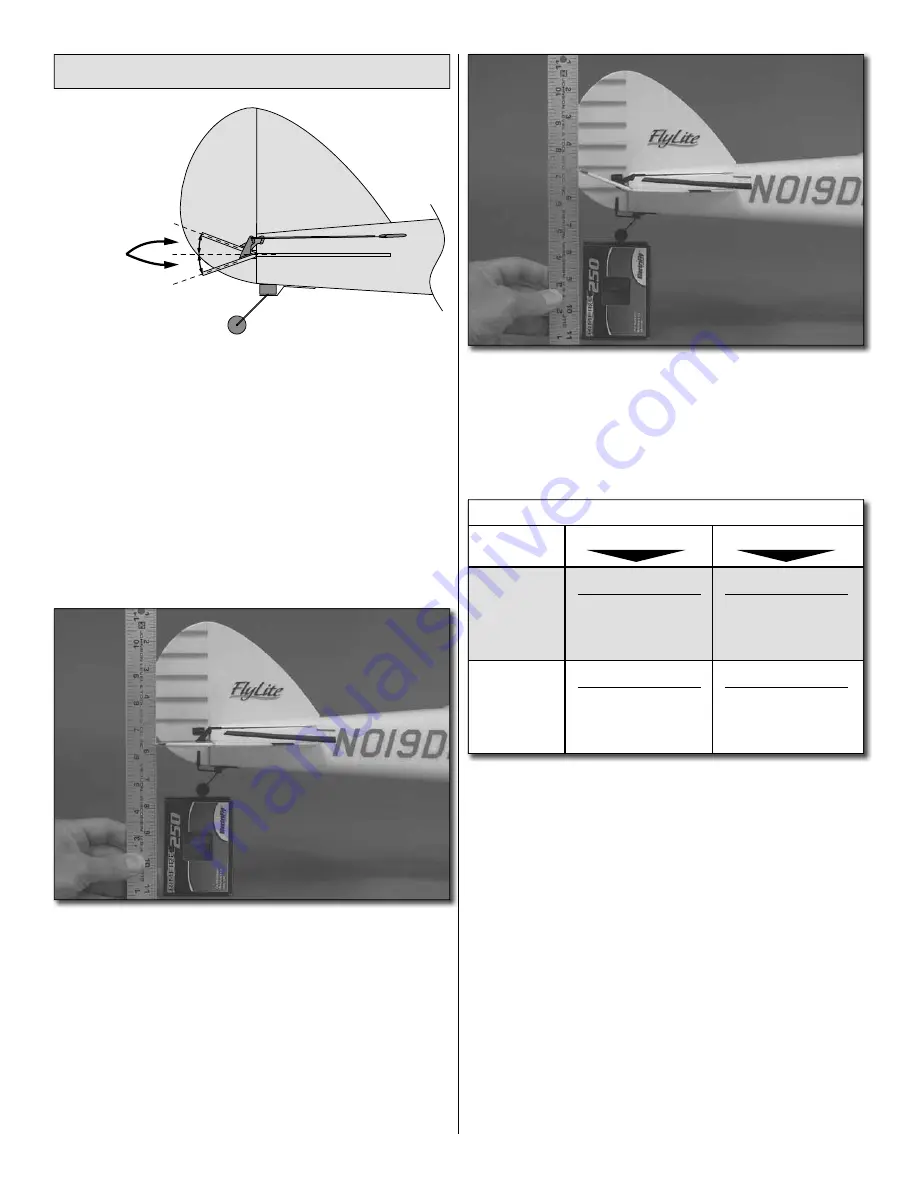
14
Check the Control Throws
CONTROL
THROW
Up
Down
One of the most important factors in determining how a plane
fl ies—and your ability to control it—is the control throw, or how
far each control surface moves up and down or left and right.
If the throw is too much the plane will respond too quickly and
you will end up over controlling it. If the throw is too little the
plane will respond too slowly and there may not be enough to
maneuver or change direction. Follow the procedure below to
make sure the control throws are set properly.
Measure the elevator throw fi rst:
❏
1. Use a small box or something similar to prop up the aft
end of the fuselage so the stab will be level (or nearly level).
❏
2.
Still without the propeller mounted to the motor
,
turn on your transmitter and connect the battery. Place a
ruler to the trailing edge of the elevator at the widest part
(from front-to-back).
❏
3. Use your transmitter to move the elevator up and
measure the distance it moved from center. This is your “up”
control throw. Measure the down elevator control throw the
same way.
Compare the measured up and down elevator throw to the
recommended control throws below:
These are the recommended control surface throws:
ELEVATOR
HIGH RATE
LOW RATE
3/4"
[19mm]
21°
Up
3/4"
[19mm]
21°
Down
1/2"
[13mm]
14°
Up
1/2"
[13mm]
14°
Down
RUDDER
1-1/4"
[32mm]
29°
Right
1-1/4"
[32mm]
29°
Left
3/4"
[19mm]
17°
Right
3/4"
[19mm]
17°
Left
❏
4. As long as your elevator throw is within 1/8" [3.2mm]
of the recommended throws above, your elevator throw is
acceptable. If your elevator throw is
not
within 1/8" [3.2mm],
use the end point adjustments in your transmitter (if yours
has this feature) to tune the throw. If your radio does
not
have
end point adjustments, change the location of the pushrod in
the elevator horn or in the servo arm as illustrated below:


